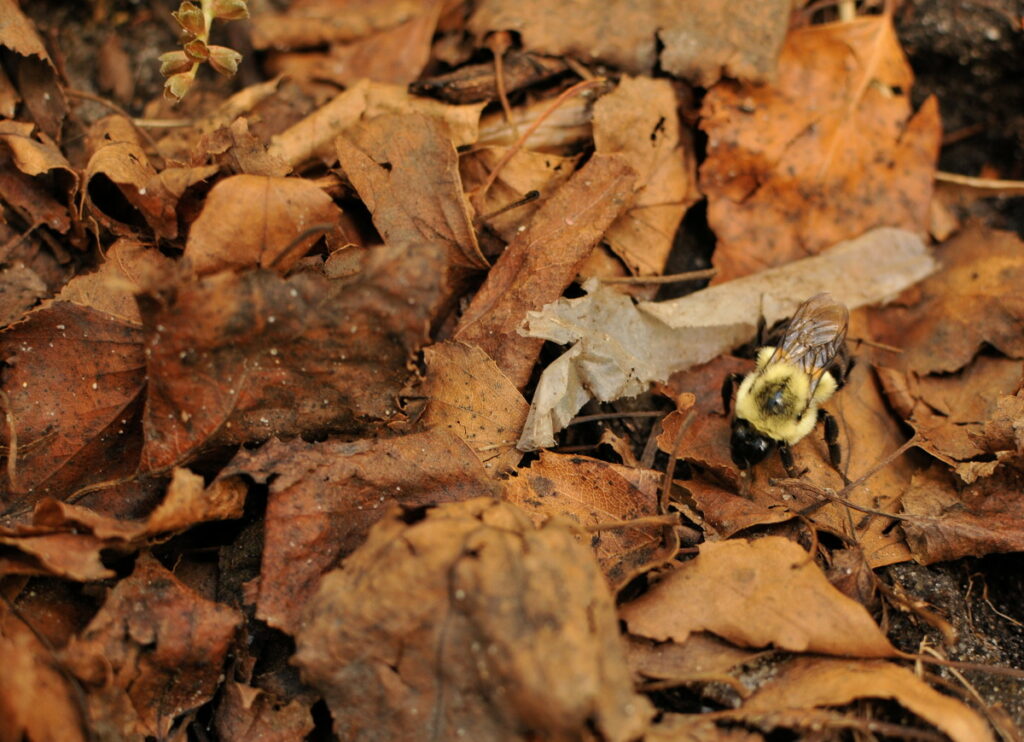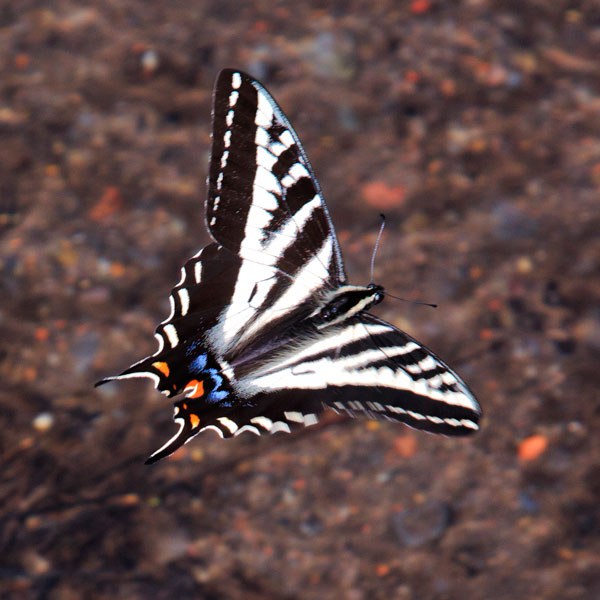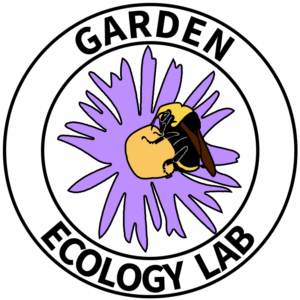I’m sure many are familiar with the long treks that many pollinators make when winter begins to roll around. Monarch butterflies will travel thousands of miles to reach their final destination. Rufous hummingbirds will spend August swooping and diving in your backyards before moving Southward as September slowly drizzles it’s way into October. But not every pollinator decides to seek warmer climes as the temperature drops. Many opt to hunker down and wait out the cold weather, seeking shelter in any manner of burrow all around your gardens. This post is focused on several things that you, as caretakers of your gardens and friends of pollinators, can do to watch out for your hard working friends.

- Leave the leaves
One of the most important things you can do to help overwintering pollinators is by doing nothing at all. By leaving the ground cover of leaves, sticks, and plant material you are also leaving the material that many pollinators use to make nests. Many pollinators will snuggle down into this protective layer, and be safe and sound during the colder months. By not raking up the leaves deposited by shedding trees, you are helping pollinators have a safer and more comfortable winter. If a little clean up is necessary, try not to completely remove the leaves or plant material, but instead, rake it onto beds or around shrubs so that it stays as part of the environment. Along with protecting pollinators, leaving this cover can help retain soil moisture, prevent weeds, return nutrients to the soil, and reduce waste entering landfills. So if and when possible, consider leaving the leaves.

- Postpone pulling up dead stems, or moving old bark
Many pollinators will use dead stems or old bark as protection from the elements while they are overwintering. If possible, postpone pulling dead steams, or throwing out old branches, sticks or bark. Cavity dwelling pollinators will often seek shelter inside wood piles, old logs, or dead flower stalks. Several types of chrysalis’s have patterns similar to wood to blend into the environment while the pupa inside waits for spring. Butterflies that do not migrate will spend winter in varying life stages, some as eggs, some as caterpillars, some as a chrysalis, and some as adults. Therefore, it is best to leave as many forms of shelter as possible. Keep your eye on any bamboo posts in your garden, as many different types of bees will use these as bunkers during the cold. Be careful when moving or uprooting, and keep an eye out for pollinators hiding in crevices, cracks or crannies.

- Leave your hummingbird feeder up
There are many different opinions on this advice. Many people will say that leaving your hummingbird feeder up during the winter will deter the hummingbirds from migrating. However, there is no easily found evidence that supports this. The Audubon Organization indicates that you can leave up your feeder for as long as you have hummingbirds, and having a feeder up as winter rolls around will not keep hummingbirds from migrating. Hummingbirds migrate due to genetics and other factors, not necessarily due to availability of food. However, not all hummingbirds migrate. Anna’s hummingbird, which can be found across the Northwest, Oregon included, is nonmigratory, and might be extra appreciative of feeders that are left up during the colder months. Adding extra sugar to keep the hummingbird food from freezing is not recommended, however, as this can dehydrate the birds. Keep the ratio of 1:4 parts sugar to water. Instead, to try and prevent freezing, you can take the feeder inside at night; hummingbirds don’t feed at night. You can also hang an incandescent bulb near the feeder, as this can generate enough heat to keep the feeder thawed.
While the three listed above are only a few steps to be taken to help overwintering pollinators, a little help can go a long way for our essential pollinator companions. They, like any of us, just want to stay warm and fed during the cold months, and I’m sure would greatly appreciate any help from you in helping them stay that way.



1 Comment
Add Yours →I am located in SW Washington quite close to the Ridgefield National Wildlife Refuge. Annas hummingbirds are quite common on this property and we are feeding regularly. Jays, both Stellars and Scrubs, are also common on the property and are being fed some whole raw peanuts. Thank you for this newsletter. It is is much appreciated.